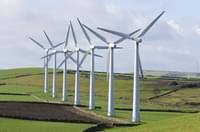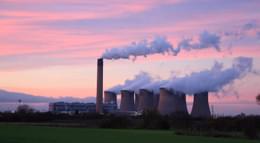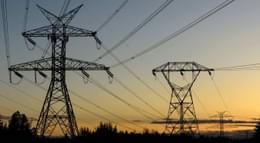
We can't just turn off existing energy sources
Following the publishing of the government's new energy strategy last week, Mike Kelly writes that while aspects of the strategy are laudable, there are holes in the plan that ultimately leave it falling short.
The parts of the government's new energy security strategy, announced last week, that have received the most focus are the aim to have six or seven nuclear power stations under development by 2050, more drilling for oil and gas in the North Sea, and the much-lauded goal of achieving a fivefold boost to offshore wind power.
The energy strategy was always going to offer a solution that was a mix of different technologies. Further exploitation of fossil fuels may run counter to the government's own net-zero climate targets. However, we need to accept that we can't just turn off existing sources during the transition to renewables and nuclear.
Yet whilst the stress on offshore wind is to be applauded, it's also a clear example of the government going for an easy win on renewable energy. The UK already has 80 gigawatts of offshore wind in the development pipeline. The energy strategy outlines the aspiration to produce up to 50 gigawatts through offshore wind farms. Given the momentum that already exists in the sector, it would probably have carried itself to that target without the support of the energy strategy, though this support is of course welcome.
The real disappointment is the fact that onshore wind has been left out of the strategy. Changes to the planning laws in England that allow the authorisation of more onshore wind – much debated in the run up to the publication of the strategy – have not materialised.
The bulk of the population of the UK lives in England. Whilst Boris Johnson has praised solar power for being cheap and effective, onshore wind is just as cheap and effective, if not more so, because we have more wind than sun in the UK. If we're trying to reach net zero, making it difficult to develop onshore wind in the most populous part of the UK doesn't make sense.
There are of course legitimate concerns from local communities about wind farms being built within sight of their properties, though these will to a significant extent be mitigated by the partnerships proposed by the energy strategy with 'supportive communities', who could agree to host turbines in exchange for guaranteed cheaper energy bills.
However, the greatest disappointment in the strategy is the failure free up planning laws in England – which have stymied onshore wind since 2015 – and are highly likely to block or at best deter the development of hybrid renewable energy sites. Hybrid sites haven't really figured in the public debate around the strategy, yet they are vital to the UK's longer term energy security.
Hybrid plants contain a hybrid mix of solar panels, wind turbines and energy storage. They help to maximise green energy generation because they can use a variety of different sources of generation to supply the same grid connection that has been secured for the site. This is vital because, in the UK, restrictions to the grid infrastructure and problems accessing it are a major block to renewables energy development.
An increasing number of hybrid renewables plants are currently being proposed, including some very large ones in Scotland and Wales. But, as they stand, current planning laws for onshore wind are not only an impediment to wind farms being developed per se, they are also likely to block such hybrid developments. Given that the government has now failed to propose replacing the planning regime for onshore wind, we are likely to see a situation where the development of the hybrid sites that we need and that are in the pipeline can't go ahead.
Hybrid plants also offer onsite energy storage, and energy storage is something that, in terms of a key priority, appears to have been left out of the energy strategy and is missing from the public conversation. People are operating under assumption that there's only renewable energy when the wind blows and the sun shines. That's true, but if you have comparable expansion of storage integrated with generation, that starts to create a baseload that can secure supply. This failure to include storage in the energy strategy as a key priority is a conspicuous 'miss', even though we're moving in the right direction with offshore wind.












